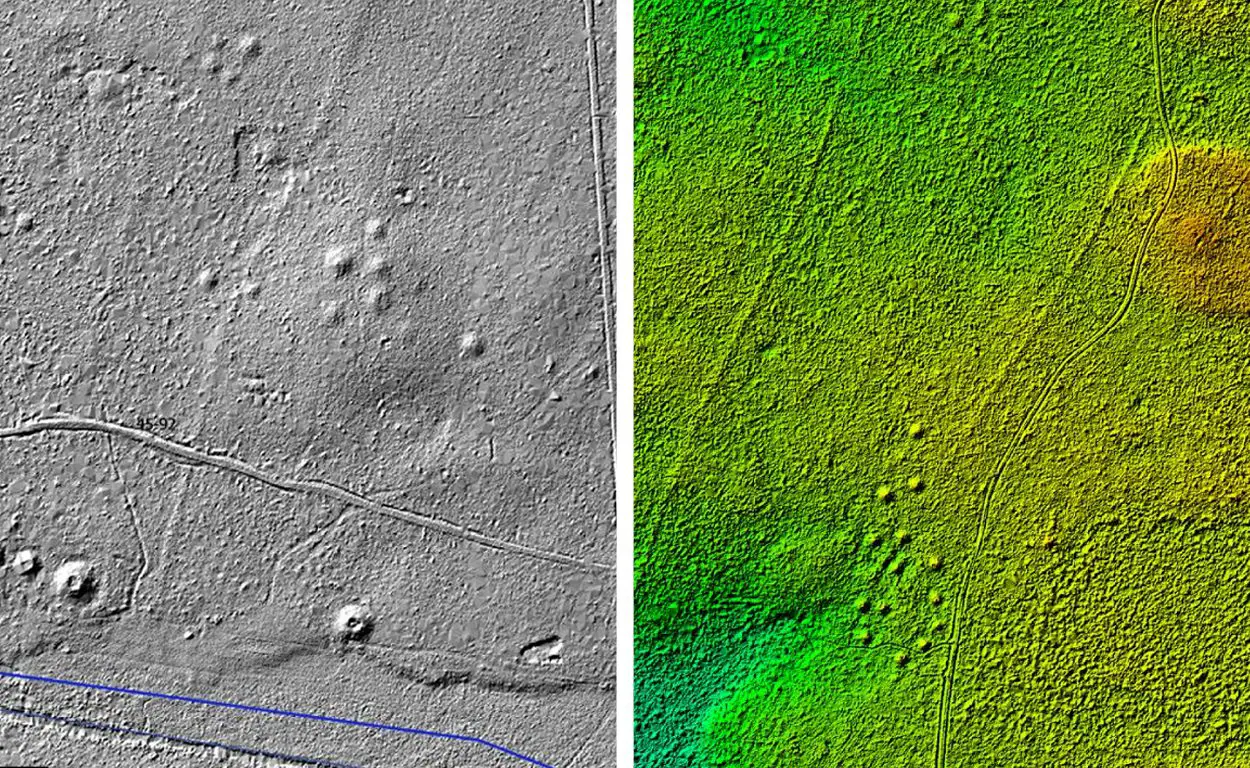A team of archaeologists from the Institute of Archaeology at the Cardinal Stefan Wyszyński University (IA UKSW) in Warsaw, has revealed a lost landscape in the Białowieża Forest on the border between Belarus and Poland, containing hundreds of ancient monuments.
Light Detection and Ranging (LiDAR) is a method of remote sensing using light in the form of a pulsed laser to measure ranges (variable distances) to the Earth. The differences in the laser return times and measuring the wavelengths can be used to compile a 3-D digital map of the landscape, removing obscuring features such as woodland that could hide archaeological features.
Using this technique, the team identified sites from prehistory to WW2 that consists of 577 ancient burial barrows, 246 charcoal kiln sites, 54 tar plants, 19 complexes of ancient farmlands, 51 semi-dugouts and 17 war cemeteries.
Some of the mound’s date from the early Middle Ages, but most are from the period of Roman influence (2nd-5th century AD). Several of them have been excavated, with those from the Middle Ages containing skeleton or cremation burials, while those from earlier periods appear to be devoid of human remains.
Dr. Joanna Wawrzeniek from the IA UKSW told PAP that people in prehistory and in the Middle Ages inhabited the region mainly on small forest elevations with access to a river or stream. These places were often inhabited for long periods, sometimes intermittently.
The team also identified two fortified structures, the first of which is located in the Strict Reserve of the Białowieża National Park, and the other is in the Wilczy Jar Forest District.
The first structure has a diameter of 36 metres and a small embankment 3 metres wide. In the interior of the structure, archaeologists found Slavic pottery from the early and late Middle Ages and ancient flint relics.
The second structure has a diameter of around 17 m, for an analysis of organic remains found in situ suggests that the site was used in two periods, from the 4th-3rd century BC and the 7th-10th century AD.
Header Image Credit : M. Szubski & M. Jakubczak





